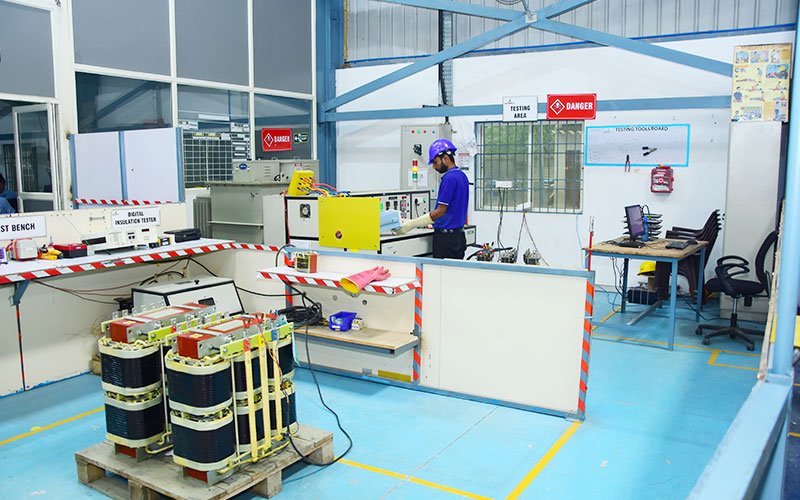Frequently Asked questions
Ideally, a transformer should be chosen based on the following parameters that play a crucial role during the process of installing a new transformer:
- Figure out the KVA, Ampere or Wattage that is crucial for the load.
- Determine the supply voltage.
- Ascertain the voltage required by the load.
- Diagnose the frequency of supply source.
After carefully examining the above-mentioned parameters, one can make the decision about which transformer to install.
There are umpteen reasons why a transformer can go bad or break down. However, some of the common causes are:
- Lightning strikes caused by thunder,
- Overloading or High-voltage,
- Corrosion and ageing,
- Power surges, and
- Moisture.
Some of the common traits of a furnace transformer malfunction are:
- Witnessing a dip in the quality of the transformer.
- Frequent trip in the circuit breaker.
- Sudden voltage surges.
- Parts of your furnace system getting fried for voltage surges.
Yes, dry transformers can be installed however the core or coil assembly will require a mounting and terminal dimension to suit the requirements of the enclosure. If there is indeed an enclosure, then it provides the much-needed protection to the coils and ensure that there is enough ventilation for the transformer.
Power transformers are primarily used for the purpose of transmission of heavy load, high voltage, which is greater than 33 KV with 100% efficiencies. They are also larger in size in comparison to a distribution transformer, and are often used in generating station and Transmission sub-stations that has high insulation level.
The distribution transformers, on the other hand, are purposeful for the distribution of electrical energy at low voltage which is usually less than 33KV for industrial purposes and 440V-220V for domestic purpose. They work at low efficiency, ranging between 50-70%, and are way smaller in size. The distribution transformers are easy to install, with low magnetic losses and are often not fully loaded.


Fill In Your Details
A dry-type transformer should never be overloaded as overloading causes emission of very high temperature that can cause overheating which further will result in the rapid decline of the insulation and cause complete failure of the coils within the transformers.
No, it is not possible for transformers to develop three phase powers from a single-phase source. Ideally, the most resorted way to convert a single-phase source to a three-phase source is to optimally utilise devices which are known as rotary or static phase converters.
Yes, it is possible to connect a single-phase transformer into a three-phase supply by resorting to one of the following means:
One can connect the primary leads to any of the two wires that are present in the three-phase source to obtain a single-phase output using a single transformer, independent in nature.
KVA stands for kilo-volt-ampere, the unit of electric power. While calculating kVA of any device, the power factor is not taken into consideration.
(i.e.) Power in kVA = Voltage x Current.
This implies kVA is the unit of measurement for that device in which the output power is independent of power factor. To cite examples, we have, Rating of Alternators, Transformers, and UPS etc.
Contrarily, KW (Kilo-Watts) is also the unit of electric power for a particular device in which power factor plays a role. Usually, the machines that produce a mechanical output is rated in kilowatts. For example, the rating of electric motors.
Transformers are an energy transfer device which are responsible for transferring power from the primary to the secondary sides without changing or altering the level of energy, considering that there is zero power loss. Iron loss and copper loss occurring inside of the transformer are also independent of the power factor that is provided. Furthermore, the output power factor of the transformer entirely depends on the connected load. The transformer does not alter the power factor of its output power.
Transformers are rated in kVA because the losses that occur in the transformers are independent of power factor.
We are always on the look-out for high performing and self-motivated experienced candidates for Electrical Engineering, Mechanical Engineering, Design,
Manufacturing & Production and Marketing. It is an environment where every person is someone you respect and can learn from, helping each other to achieve excellence.
We also have an entry level Trainee program for freshers in Engineering and Production. Looking for eager self-motivated candidates, who want to learn,
develop, and grow with the organization.
We strive to develop all our people by giving them the opportunity to develop themselves, by surrounding them with remarkable colleagues and giving them
big challenges to work on.
Please post your CV’s or queries to info@dynalektric.com
